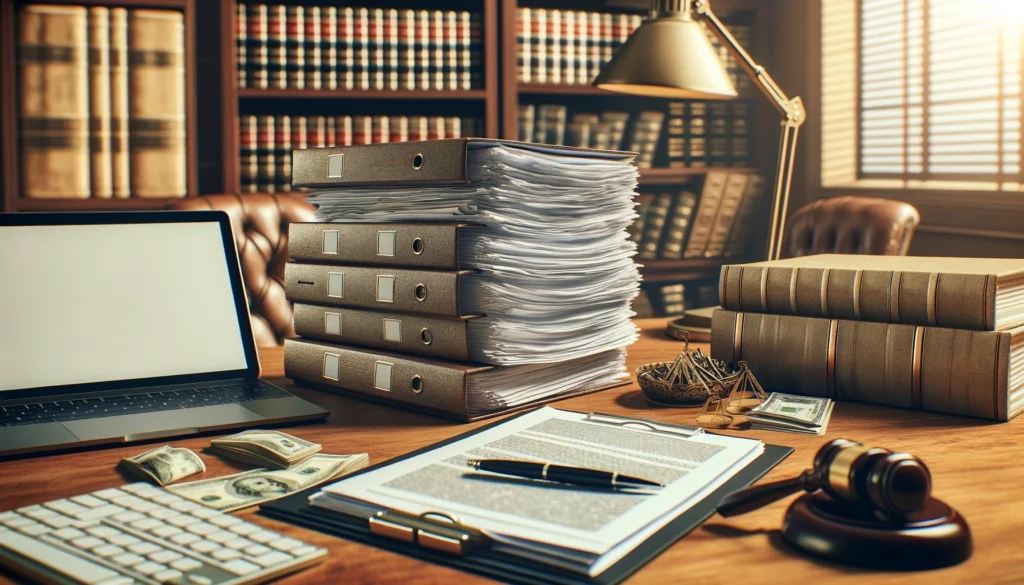
A New Era in Legal Assistance: ChatGPT and Paralegals
The advent of AI language models has ushered in significant advancements across various fields, and the legal industry is no exception. Among these advancements, ChatGPT stands out as a versatile tool that can transform daily operations for paralegals. By handling repetitive yet essential tasks, ChatGPT can save paralegals considerable time and effort, allowing them to focus on more complex aspects of their work. This newfound efficiency not only benefits the legal professionals but also enhances the overall service to clients.
As we delve deeper, we will see how ChatGPT can notably streamline one particularly cumbersome task: settlement demand follow-ups. From drafting initial requests to managing ongoing communication, the potential for AI to revolutionize this process is immense.
Streamlining Settlement Demand Follow-Ups: A Quick Overview
Settlement demand follow-ups are often fraught with challenges, from managing volumes of correspondence to ensuring timely and persuasive communications. Paralegals typically face obstacles like delayed responses, maintaining consistent follow-ups, and the sheer administrative burden of tracking multiple cases simultaneously.
This is where ChatGPT steps in, offering a sophisticated solution to these common pain points. By automating the drafting and tracking of follow-up communications, AI can significantly reduce the workload. The use of ChatGPT offers not only an immediate improvement in efficiency but also the potential for more nuanced and strategic communication, ensuring that follow-ups are both timely and effective.
Also read:
Unleashing the Power of Prompts: Maximizing ChatGPT Efficiency
To harness the full potential of ChatGPT in the realm of settlement demand follow-ups, crafting effective prompts is essential. The prompts serve as the instructions ChatGPT uses to generate text, and their quality directly impacts the usefulness of the output.
Crafting Initial Settlement Demand Follow-Up Requests
- Clearly state the objective: “Generate a follow-up email regarding our previous settlement demand sent on [date]. Emphasize the urgency and request a status update.”
- Include pertinent case details: “Mention the client’s name, the case reference number, and any specific points from the initial demand that need reiteration.”
Tailoring Follow-Ups Based on Previous Correspondence
- Account for prior interactions: “Based on the response received on [date], draft a follow-up email addressing any new information or queries they raised.”
- Maintain consistency: “Ensure the tone and content align with our previous communications to reinforce our position.”
- Examples of nuanced prompts:
- “Respond to the insurer’s request for additional medical documentation by reiterating our client’s medical situation and the provided evidence.”
- “Generate a polite yet firm follow-up email highlighting the delayed response and its impact on our client’s situation.”
By honing these prompts, paralegals can maximize the efficiency and accuracy of their follow-up communications, ensuring that each interaction is purposeful and impactful.
Also read:
Crafting Nuanced and Effective Prompts: Step-by-Step Guide
Effective prompt crafting is both an art and a science. To help paralegals master this skill, we offer a step-by-step guide:
Techniques for Creating Specific, Goal-Oriented Prompts
- Start with a clear objective: Define what you want the AI to accomplish.
- Provide sufficient context: Include all relevant details and background information.
- Be explicit in your instructions: Specify the tone, format, and key points to be addressed.
Examples of Prompts for Various Stages of the Follow-Up Process
- Initial Follow-Up: “Draft an email to [Recipient] requesting an update on the settlement demand made on [Date]. Emphasize the urgency and reiterate the key points previously mentioned, including [specific injuries/claims].”
- Second Follow-Up (After Initial Contact): “Create a follow-up email referencing our last communication on [Date]. Address any new information provided and reassert our request for prompt resolution.”
- Final Follow-Up (Escalation): “Prepare a communication highlighting the lack of response from previous attempts. Suggest possible next steps, including formal legal action, if no resolution is reached promptly.”
Avoiding Common Pitfalls and Maximizing Accuracy in Generated Text
- Overgeneralization: Ensure prompts are specific and detailed to avoid vague outputs.
- Ignoring Context: Always include background information to maintain coherence in communications.
- Neglecting Tone: Specify the desired tone to ensure appropriateness and professionalism in all interactions.
By conscientiously applying these techniques, paralegals can craft prompts that yield high-quality, tailored outputs from ChatGPT, greatly enhancing their daily workflow.
Also read:
Smart Data Management: Integrating Case Information with ChatGPT
Effective data management is crucial for seamless integration of AI tools like ChatGPT in legal work. To ensure consistency and thoroughness in follow-ups, organizing case details methodically is key.
- Organizing Case Details: Maintain an up-to-date database that includes client names, case reference numbers, key dates, and significant communications.
- Utilizing ChatGPT for Consistency: Input comprehensive case summaries into ChatGPT to help it generate consistent, informed follow-ups. For example, “Generate a follow-up email regarding the settlement demand for case #12345. Include client John Doe’s injury details, settlement amount requested, and any prior responses.”
By aligning case information with AI inputs, paralegals can ensure that all communications are well-informed, consistent, and precise, thereby bolstering the efficiency of their follow-up processes.
Also read:
Boosting Productivity: Time-Saving Tips and Tricks
To unlock the full potential of ChatGPT in legal workflows, consider these quick wins and best practices:
- Pre-Defined Templates: Create and save common prompt templates for routine follow-ups.
- Routine Updates: Regularly update AI inputs with the latest case details to maintain accuracy.
- Batch Processing: Handle multiple follow-ups in a single session to maximize time efficiency.
Implementing these strategies can provide immediate boosts to productivity, allowing legal professionals to make the most of AI technology.
Also read:
The Future of Legal Workflows: Staying Ahead with AI Innovations
As the technology landscape continues to evolve, staying ahead of AI innovations will be crucial for legal professionals. Anticipated trends include more advanced language models, greater integration capabilities, and enhanced data security features.
To remain competitive, law firms and paralegals should actively seek out continuous learning opportunities and be prepared to adapt their workflows in line with upcoming technological advancements.
Also read:
Conclusion: Transforming Tasks with Technology
The integration of AI tools like ChatGPT offers paralegals a powerful means to enhance efficiency and effectiveness in their roles. By adopting the strategies outlined above, professionals can leverage AI to transform mundane tasks, such as settlement demand follow-ups, thereby providing exceptional service and achieving greater productivity.
As the legal industry continues to embrace AI, the collaboration between human expertise and machine intelligence will undoubtedly lead to more streamlined and sophisticated workflows, setting the stage for a new era in legal assistance.


